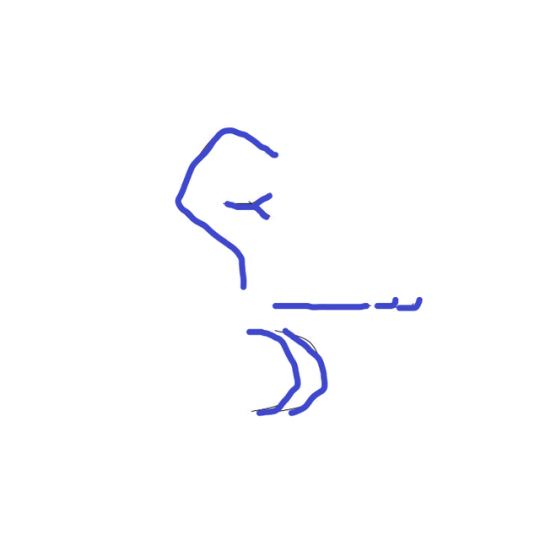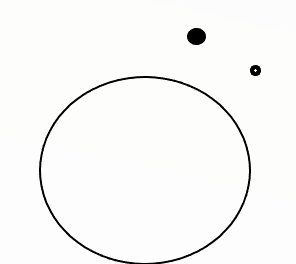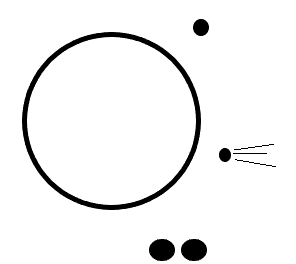HotTexasCowboy
Star
- Joined
- Feb 7, 2011
It began, some would say, with Napoleon. A man of physical stature that at best was average, but whose shadow loomed over the dawn of the nineteenth century like almost no other.
In 1798, his reputation as a general for the Revolutionary Directorate was already notable. His plan, approved by the Directorate, was to lead an expeditionary force to Egypt and the Levant, crippling the Ottomans and, of more import, cutting off easy access for Great Britain to its valuable colony of India. His army quickly seized Alexandria and Cairo, and then set out on a campaign to take Syria, one fortress city at a time. After three years of victories and setbacks, his supply lines cut by Nelson and the British navy, his troops suffering from plague, he retreated back to Egypt. His reputation and status with the Directorate at risk, he sneaked back to France and, amazingly, emerged as the new leader of the Republique, eventually to take the title of Emperor.
More importantly to our story, his soldiers in Egypt were accompanied by another significant army, 167 of the Enlightenment’s best thinkers, engineers, scientists, and archaeologists. Their discoveries, detailed to Europe in writing for the next twenty years, started a wave of enthusiasm for Egyptology and archaeology. They found countless artifacts of the Empires of the Pharaohs, including the famous Rosetta Stone, the keystone of translation of until then enigmatic symbols of the ancient Egyptian written language. When the remnants of France’s expeditionary force surrendered to the British-Ottoman armies that retook Egypt in 1801, over 500 artifacts were ceded to the British, which ended up as the seeds of the Egyptian wing of the British Museum, the largest collection of ancient Egyptian artifacts in the world (even the floundering Cairo museum had less for over a century.) The Rosetta Stone itself ended up there, and the Egyptian wing continued as one of the most popular destinations for the public and pre-historical study for the rest of the century.
Thus it was, in the early Spring of 1885, a young woman emerged from a Hanson cab, paid the driver, and strode confidently into a side entrance of the imposing building of the British Museum. She was elegantly dressed in the latest fashions, but seemed hardly aware of it as she made her way through the maze of exhibits. Her green eyes were determined and purposeful as she found a wrought iron staircase to the second floor, where the offices and work spaces were to be found. As she made her way toward her familiar work area, she was interrupted by a young man, a clerk of Lord Sherwood’s, who informed her that the director of the Egyptian wing wanted to see her on a matter of some importance as soon as possible.
Curious, and always accommodating of the director, she ducked into her workspace, unpinned her hat and left her umbrella at the hat rack, and made her way along the catwalks to the director’s office.
Lord Sherwood was a portly gentleman who treated his title rather cavalierly and was keenly interested in all things ancient Egyptian. He was seated at his rather cluttered desk, but stood politely as the young woman entered, as did his guest sitting before him. “Ah, Annabeth,” Sherwood greeted her with a friendly smile. Sherwood regarded the young woman with almost grandfatherly affection, after having “discovered” her in his museum a few years ago and encouraging her intellectual gifts and interests. He motioned to his guest. “I’d like to introduce you to a visitor, Ubamumti Gamal, from Cairo. He’s an archaeologist in his own right, fresh from his own fascinating discoveries in Upper Egypt. He’d like to discuss our progress, such as it is, with the Orb. Mr. Gamal, let me present Lady Anna Elizabeth Victoria Hampshire.”
Mr. Gamal bowed politely and doffed his bowler hat with a smile. His skin was a darker shade than most European men, and he looked perhaps a decade older than Annabeth’s 22 years, but his body, even under his well-tailored white suit looked trim and even muscular. His face was lean and handsome, with his dark black hair and a neatly trimmed beard giving him a slightly exotic appearance. He spoke with perfect, if slightly accented English, bespeaking an excellent education. “It’s an honor to meet you, Lady Hampshire. Lord Sherwood has been quite complimentary about your research into the Orb, and I’m hopeful that some of our discoveries recently can help with your efforts. With both our efforts, I may say, as we are as interested in the Orb as you. Have you any more information on where it was found?”
The director frowned at that. “We know that it was part of the hoard of antiquities discovered by the French during Napoleon’s endeavors, and turned over to the Museum after they surrendered. Unfortunately, it remained in our storage basement, since there was no provenance for it, and our scholars had little luck translating its inscriptions using the template of the Rosetta Stone. Lady Hampshire actually found it last year in the basement and had it brought up into the light for further study. It now has a place on the display floor, as one of the ‘mysteries of ancient Egypt.’ “
Gamal perked up at the news. “I would love to see it,” he said enthusiastically, and turning toward Annabeth, he asked, “Could you show it to me, please?”
Lord Sherwood coughed slightly and nodded, “We’d be delighted, Mr. Gamal. Annabeth, perhaps you’d like to lead the way?”
In 1798, his reputation as a general for the Revolutionary Directorate was already notable. His plan, approved by the Directorate, was to lead an expeditionary force to Egypt and the Levant, crippling the Ottomans and, of more import, cutting off easy access for Great Britain to its valuable colony of India. His army quickly seized Alexandria and Cairo, and then set out on a campaign to take Syria, one fortress city at a time. After three years of victories and setbacks, his supply lines cut by Nelson and the British navy, his troops suffering from plague, he retreated back to Egypt. His reputation and status with the Directorate at risk, he sneaked back to France and, amazingly, emerged as the new leader of the Republique, eventually to take the title of Emperor.
More importantly to our story, his soldiers in Egypt were accompanied by another significant army, 167 of the Enlightenment’s best thinkers, engineers, scientists, and archaeologists. Their discoveries, detailed to Europe in writing for the next twenty years, started a wave of enthusiasm for Egyptology and archaeology. They found countless artifacts of the Empires of the Pharaohs, including the famous Rosetta Stone, the keystone of translation of until then enigmatic symbols of the ancient Egyptian written language. When the remnants of France’s expeditionary force surrendered to the British-Ottoman armies that retook Egypt in 1801, over 500 artifacts were ceded to the British, which ended up as the seeds of the Egyptian wing of the British Museum, the largest collection of ancient Egyptian artifacts in the world (even the floundering Cairo museum had less for over a century.) The Rosetta Stone itself ended up there, and the Egyptian wing continued as one of the most popular destinations for the public and pre-historical study for the rest of the century.
Thus it was, in the early Spring of 1885, a young woman emerged from a Hanson cab, paid the driver, and strode confidently into a side entrance of the imposing building of the British Museum. She was elegantly dressed in the latest fashions, but seemed hardly aware of it as she made her way through the maze of exhibits. Her green eyes were determined and purposeful as she found a wrought iron staircase to the second floor, where the offices and work spaces were to be found. As she made her way toward her familiar work area, she was interrupted by a young man, a clerk of Lord Sherwood’s, who informed her that the director of the Egyptian wing wanted to see her on a matter of some importance as soon as possible.
Curious, and always accommodating of the director, she ducked into her workspace, unpinned her hat and left her umbrella at the hat rack, and made her way along the catwalks to the director’s office.
Lord Sherwood was a portly gentleman who treated his title rather cavalierly and was keenly interested in all things ancient Egyptian. He was seated at his rather cluttered desk, but stood politely as the young woman entered, as did his guest sitting before him. “Ah, Annabeth,” Sherwood greeted her with a friendly smile. Sherwood regarded the young woman with almost grandfatherly affection, after having “discovered” her in his museum a few years ago and encouraging her intellectual gifts and interests. He motioned to his guest. “I’d like to introduce you to a visitor, Ubamumti Gamal, from Cairo. He’s an archaeologist in his own right, fresh from his own fascinating discoveries in Upper Egypt. He’d like to discuss our progress, such as it is, with the Orb. Mr. Gamal, let me present Lady Anna Elizabeth Victoria Hampshire.”
Mr. Gamal bowed politely and doffed his bowler hat with a smile. His skin was a darker shade than most European men, and he looked perhaps a decade older than Annabeth’s 22 years, but his body, even under his well-tailored white suit looked trim and even muscular. His face was lean and handsome, with his dark black hair and a neatly trimmed beard giving him a slightly exotic appearance. He spoke with perfect, if slightly accented English, bespeaking an excellent education. “It’s an honor to meet you, Lady Hampshire. Lord Sherwood has been quite complimentary about your research into the Orb, and I’m hopeful that some of our discoveries recently can help with your efforts. With both our efforts, I may say, as we are as interested in the Orb as you. Have you any more information on where it was found?”
The director frowned at that. “We know that it was part of the hoard of antiquities discovered by the French during Napoleon’s endeavors, and turned over to the Museum after they surrendered. Unfortunately, it remained in our storage basement, since there was no provenance for it, and our scholars had little luck translating its inscriptions using the template of the Rosetta Stone. Lady Hampshire actually found it last year in the basement and had it brought up into the light for further study. It now has a place on the display floor, as one of the ‘mysteries of ancient Egypt.’ “
Gamal perked up at the news. “I would love to see it,” he said enthusiastically, and turning toward Annabeth, he asked, “Could you show it to me, please?”
Lord Sherwood coughed slightly and nodded, “We’d be delighted, Mr. Gamal. Annabeth, perhaps you’d like to lead the way?”

 Your support makes Blue Moon possible (Patreon)
Your support makes Blue Moon possible (Patreon)




